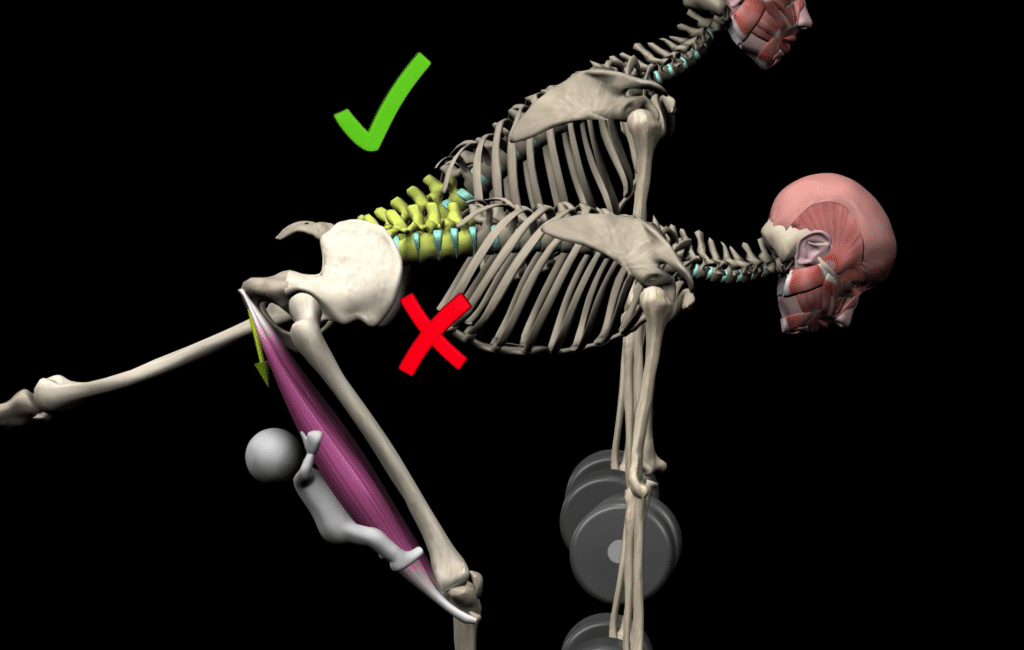The deadlift is an excellent exercise for building strength, muscle, and burning calories.
It works muscles in the glutes, hamstrings, back, and core. Performing the deadlift properly can help increase flexibility, balance, posture, and coordination.
Additionally, it may help reduce the risk of injury to the lower body.
Here is an old video we uploaded on YouTube:) Check it out to understand better the anatomy of the Deadlift.
How to Deadlift?
Starting position: The bar is above the feet, close to the shin bone.
The shoulders are slightly in front of the bar.
Pulling the bar close to the body requires assistance and stabilization by the latissimus dorsi.
Keep the core muscles activated and the back straight.
The deadlift can be divided into two stages:
A) The first stage:
Lifting the bar to knee level.
This is done mainly through knee extension.
The trunk remains in a forward–leaning position.
B) The second stage:
Full extension of the hip and the knee until the body is fully straightened.
Keep the bar in contact with the thighs.
The latissimus dorsi pushes the bar back to the thighs.
*This and all other videos in this blog are from the Strength Training app.
Expand your understanding of kinesiology and body movement.
Try the Strength Training app Today!
The Importance of Maintaining A Straight Back
The rod placed on the back illustrates the importance of maintaining a straight back.
Throughout the exercise, keep the back in a neutral position.
In other words, even when we bend down, we will keep the same back position as when we are standing erect!
In this position, the core muscles work together with the greatest efficacy and protect the spine.
In any other position, neuro-muscular coordination among the core muscles is impaired!
In other words, the cables that hold the bridge are weakened, and in addition, the mechanical load on the vertebrae loses balance and creates undesirable focused pressure.

Common Mistake: Spine is not neutral
It is very common to see both sides of the spectrum when it comes to not having a neutral spine.
On the one hand, we have the athlete whose spine is in flexion (rounded). On the other hand, we have the athlete who overcompensates and pulls the lower lumbar into hyperextension, creating an extreme amount of tension and pressure on that area.
Another common mistake you should avoid is posterior pelvic tilt while raising the rod, which directly causes a chain reaction of flattening the lumbar lordosis, thus increasing the load on the lumbar vertebrae.
More Deadlift Variations
To get the most out of a deadlift, it is crucial to use proper technique and form.
Here below, you will see another deadlift exercise; this one is called: Romanian Deadlift.
Romanian Deadlift (RDL)
Starts in a standing position. (the bar does not touch the floor).
Classical Deadlift starts on the floor (Dead-stop).
Keep the back straight!
At the start, the bar should be resting against the thighs.
The movement is through the hip joint (hip hinge) and not through the spine.
Keep the bar in contact with the thighs all the way down.
Target muscles:
Gluteus maximus
Hamstrings
Erector spinae (static contraction)
The spinal erectors are statically active and prevent spinal flexion.
Sumo Deadlift
Take your stance, feet under the bar with a wide stance, and your toes out.
Squat down and grasp the bar.
Squeeze the bar off the floor and drag it up your legs until it locks out at the top (do not pull back into the shins).
The bar should come off the ground in a vertical path.
Keep these three rules:
1) The bar must start over mid-foot
2) The shoulders must start slightly in front of the bar
3) The hips must start relatively high
*This and all other videos in this blog are from the Strength Training app.
Expand your understanding of kinesiology and body movement.
Try the Strength Training app Today on all devices. Sign up for FREE.